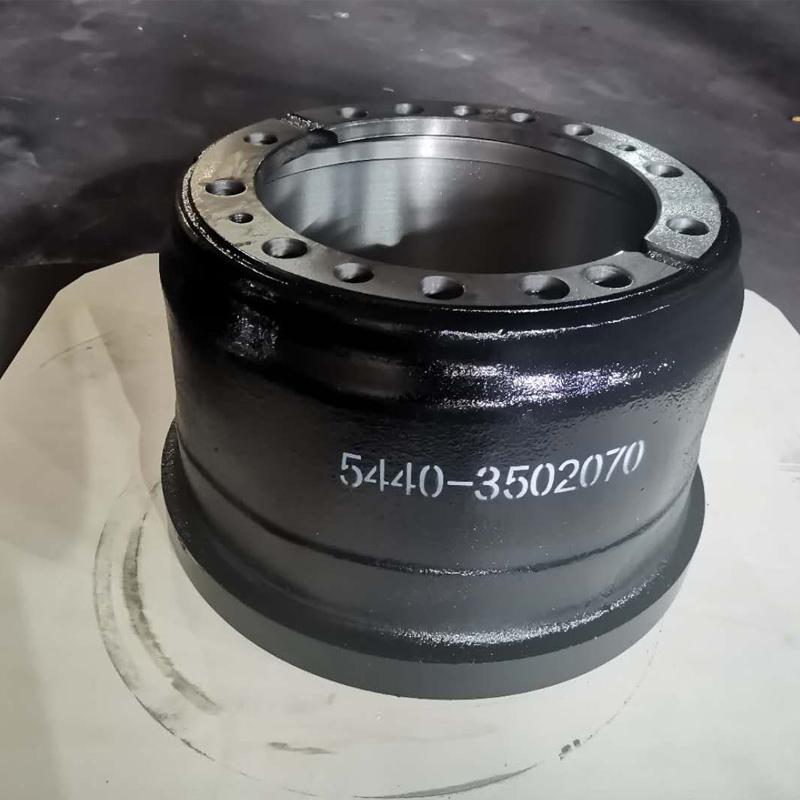Dec . 17, 2024 11:30 Back to list
brake drum seized
Understanding Brake Drum Seizure Causes, Symptoms, and Solutions
Brake systems are crucial for the safe operation of any vehicle, ensuring that drivers can reliably stop whenever necessary. One specific issue that can arise within these systems is brake drum seizure, a situation that can have dire consequences if not addressed promptly and correctly. In this article, we will explore what brake drum seizure is, the common causes behind it, the symptoms to watch out for, and the solutions to prevent and resolve this issue.
What is Brake Drum Seizure?
Brake drum seizure occurs when the brake drum becomes stuck to the brake shoes, rendering the brakes inoperable. This condition can happen in either the rear or front braking systems, though it is more common in drum brake systems primarily found in the rear wheels of many vehicles. The main function of a brake drum is to house the brake shoes and provide a surface against which they can press to create friction and slow down the vehicle. When the drum seizes, it can result in uneven braking, increased stopping distances, and even complete brake failure in extreme cases.
Causes of Brake Drum Seizure
1. Rust and Corrosion Exposure to moisture can lead to rust forming on the metal surfaces of the brake drum and shoes. This corrosion can create a bond between the two components, causing them to seize over time. Vehicles that are frequently operated in wet or humid conditions are particularly susceptible to this problem.
2. Debris Build-Up Dirt, dust, and debris can accumulate inside the brake drum assembly, creating a barrier that can prevent the brake shoes from retracting fully after the brakes are released. This constant contact can lead to increased wear and ultimately seize the components together.
3. Lack of Maintenance Like all vehicle components, brake systems require regular maintenance. Failing to inspect and service the brakes, including replacing worn shoes or drums, can result in improper functioning and eventual seizure.
4. Overheating Excessive heat generated during braking can warp the brake drum or cause the brake shoes to glaze, leading to adhesion between them. Overheated brakes may also cause the brake fluid to boil, resulting in diminished braking performance.
5. Sticking Brake Components If parts of the brake system, such as the wheel cylinder or the brake hardware, become stuck or fail, it can lead to misalignment or constant pressure on the brake shoes against the drum.
Symptoms of Brake Drum Seizure
Detecting brake drum seizure early can prevent further damage and ensure safety
. The following symptoms are common indicatorsbrake drum seized

- Unusual Noises A grinding, squeaking, or scraping noise when braking can suggest that the drum and shoes are not functioning properly. - Loss of Braking Power If you notice a significant decrease in braking efficiency, such as an increased stopping distance, this can be a red flag.
- Dragging Brakes If you feel that the vehicle is pulling to one side during braking or experiencing a sensation of resistance when the brakes are released, this may indicate that the brake drum is seized.
- Visual Inspection Rust, corrosion, or uneven wear on the brake components can often be seen during a visual inspection. If the brake drum appears damaged or worn, it may be time to replace it.
Solutions to Brake Drum Seizure
Addressing brake drum seizure involves a combination of preventative measures and corrective actions
1. Regular Maintenance Periodic inspections of your vehicle's brake system can help catch any issues early. This includes checking the condition of the brake drums and shoes, ensuring that they are clean and free from debris, and lubricating moving parts.
2. Replace Worn Components If any part of the brake system shows signs of wear, such as thin brake shoes or warped drums, replace them promptly to avoid seizure.
3. Proper Installation When replacing brake components, ensure they are installed correctly by a qualified technician. Misalignment can contribute to premature wear and seizure.
4. Addressing Environmental Concerns If you live in an area prone to moisture, consider using rust-resistant brake components and ensure that your vehicle is kept clean to reduce the chance of corrosion.
5. Seeking Professional Help If you suspect brake drum seizure, it's crucial to seek professional assistance immediately. A qualified mechanic can diagnose the problem and implement the best course of action.
In conclusion, brake drum seizure is a serious issue that can compromise vehicle safety. By understanding its causes, symptoms, and solutions, vehicle owners can take proactive steps to maintain their brake systems, ensuring safe and reliable operation on the road.
-
HINO Industrial Efficiency-Jiangsu Hino Industrial|Productivity Optimization&Cost Reduction
NewsJul.12,2025
-
HINO-¡Ң���ຽ��е��������˾|Advanced Industrial Solutions&Energy Efficiency
NewsJul.12,2025
-
Premium Brake Drum Iveco – Durable Drum Brake Drum & Brake Shoe Solutions
NewsJul.08,2025
-
High-Performance Brake Drum Liza for Enhanced Safety Reliable Drum Brake Drum & Brake Shoe Solutions
NewsJul.08,2025
-
High-Quality Brake Drum MAZ – Durable Drum Brake Drum & Brake Drum and Brake Shoe for Optimal Performance
NewsJul.07,2025
-
High-Quality Brake Drum Kamaz for Reliable Performance Durable Drum Brake Drum & Brake Shoes
NewsJul.07,2025
